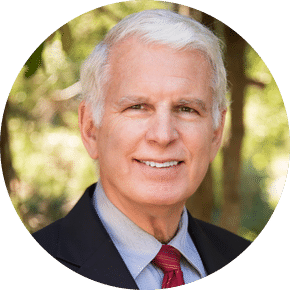Orting/
South Prairie
About Orting/South Prairie
Orting is a city in Pierce County, Washington, United States. The first recorded claims for land in Orting were made in 1854 by William Henry Whitesell, Thomas Headley, Daniel Lane, and Daniel Varner. Streets in the modern city are named after the four men, and a monument in Orting City Park commemorates them. Orting was officially incorporated as a city on April 22, 1889.
Early growth surrounded the area's production and logging industries. Later, Christmas tree and bulb farms also became part of the local economy. Orting was also a supply town for the coal mining towns Wilkeson and Carbonado. The first railroad in the city was built in 1877 by the Northern Pacific Railway, called "Whitesell's Crossing" because it ran right through the Whitesell property. Because railroads eased transportation, Orting's population quickly increased. Remaining parts from the railroad are part of the Meeker Southern Railroad, which runs between Puyallup and McMillin.
Orting is the fourth and final stop in the annual Daffodil Festival Parade. With the exception of 2020, a cancellation due to Covid-19, the parade has gone through downtown Orting since 1934. It draws over 10,000 people in early April to festivities in downtown Orting. The parade can be seen in late afternoon. It also goes through the cities of Tacoma, Puyallup, and Sumner. School bands play, and the Daffodil Queen appears.
source: wikipedia.org
Read More ▾Avg Work Commute
0 minsMedian Age
0Median Area Income
$0Median Sale Price
$0The Commute
Travel Methods
To City CenterAvailable Properties
View all ⇢Orting/South Prairie Sales Data
Percentage change from latest quarter vs same time period previous year
Data compiled using 1st quarter 2024 data vs. same period from 2023
Median Sales Price
MEDIAN SALES PRICE

Demographics
- Filter by:
- Population
- Income
- Education
- Market Rents
Population by Age Level. Median Age 37.55. Households: 2,666.
In Thousand of Dollars. (Median Income: $82,015)
Population by Education Level
Fair Market Rents
Orting/South Prairie Schools & Education
Public & Private Institutions Of Learning
Education is provided by public, private and home schools. State governments set overall educational standards, often mandate standardized tests for K–12 public school systems and supervise, usually through a board of regents, state colleges, and universities. Funding comes from the state, local, and federal government. Private schools are generally free to determine their own curriculum and staffing policies, with voluntary accreditation available through independent regional accreditation authorities, although some state regulation can apply.
Avg School Rating
2.3/5Publically Funded
7Publically Funded
Orting Primary School
Elementary School
- Kindergarten - 3Rd Grade
- Student - Teacher Ratio: 21 : 1
- Great School Rating: N/A
- Website
Orting Pre School
Elementary School
- Kindergarten - 3Rd Grade
- Student - Teacher Ratio: 22 : 1
- Great School Rating: N/A
- Website
Orting Elementary Online Academy
Elementary School
- Kindergarten - 5th Grade
- Student - Teacher Ratio: Not Reported : 1
- Great School Rating: N/A
- Website
Ptarmigan Ridge Intermediate School
Elementary School
- Kindergarten - 5th Grade
- Student - Teacher Ratio: 18 : 1
-
Great School Rating:
- Website
Orting Middle School
Middle School
- 6th Grade - 8th Grade
- Student - Teacher Ratio: 22 : 1
-
Great School Rating:
- Website
Orting Secondary Online Academy
Middle School
- 6th Grade - 12th Grade
- Student - Teacher Ratio: Not Reported : 1
- Great School Rating: N/A
- Website
Orting High School
High School
- 9th Grade - 12th Grade
- Student - Teacher Ratio: 21 : 1
-
Great School Rating:
- Website
Where To Drink, Dine, Shop, Relax & Recline






























































































































































































 By submitting information, I am providing my express written consent to be contacted by representatives of this website through a live agent, artificial or prerecorded voice, and automated SMS text at my residential or cellular number, dialed manually or by autodialer, by email, and mail.
By submitting information, I am providing my express written consent to be contacted by representatives of this website through a live agent, artificial or prerecorded voice, and automated SMS text at my residential or cellular number, dialed manually or by autodialer, by email, and mail.

